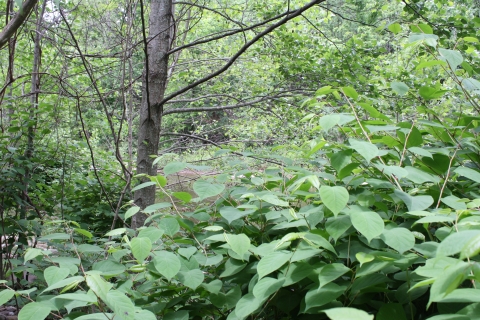The U.S. Fish and Wildlife Service Partners for Fish and Wildlife Program has provided funding to the King County Noxious Weed Control Program to control knotweed in the Green/Duwamish River watershed. Non-native knotweeds are highly invasive plants that pose an enormous challenge to land managers and restoration groups. The Upper and Middle Green River sub-watersheds had been identified as a priority area for knotweed control. In particular, control efforts were made to halt continuing expansion of knotweeds that were displacing native riparian riparian
Definition of riparian habitat or riparian areas.
Learn more about riparian vegetation and impairing riparian ecosystem functions.
The watershed was surveyed and mapped for knotweed. The knotweed was then controlled using both stem injection and foliar spray applications. The methodology for knotweed stem injection calls for injecting each cane with a small amount of herbicide, as directed by the herbicide label. After injection, each cane is marked with either degradable survey paint or a marking stick to help the applicator distinguish treated versus untreated canes. Foliar spray application is used for larger patches of knotweed.
Reduction of knotweed to maintenance levels provides substantial long-term environmental benefits to the Green/Duwamish riparian ecosystem, including:
Enhanced native plant communities;
Improved microclimate, cover, resting and feeding opportunities for native fauna including endangered salmonids;
Improved water quality due to enhanced functioning of riparian buffers;
Continued development of a framework for implementation of similar landscape-scale projects elsewhere in King County


